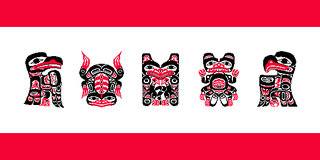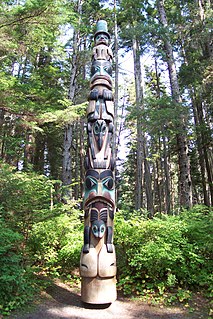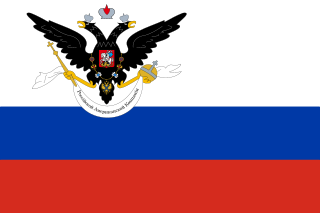Related Research Articles

The Tlingit are indigenous peoples of the Pacific Northwest Coast of North America. Their language is the Tlingit language, in which the name means 'People of the Tides'. The Russian name Koloshi or the related German name Koulischen may be encountered referring to the people in older historical literature, such as Grigory Shelikhov's 1796 map of Russian America.

Angoon is a city on Admiralty Island in Hoonah-Angoon Census Area, Alaska, United States. At the 2000 census the population was 572; by the 2010 census the population had declined to 459. The name in Tlingit, Aangóon, means roughly "isthmus town."

The Municipality and Borough of Skagway is a first-class borough in Alaska on the Alaska Panhandle. As of the 2020 census, the population was 1,240, up from 968 in 2010. The population doubles in the summer tourist season in order to deal with more than 1,000,000 visitors each year. Incorporated as a borough on June 25, 2007, it was previously a city in the Skagway-Yakutat-Angoon Census Area. The most populated community is the census-designated place of Skagway.
Kake is a first-class city in Prince of Wales-Hyder Census Area, Alaska, United States. The population was 557 at the 2010 census. The name comes from the Tlingit word Ḵéix̱ʼ or Ḵéex̱ʼ, which is derived from ḵée 'dawn, daylight' and x̱ʼé 'mouth', i.e. 'mouth of dawn' or 'opening of daylight'.

The indigenous peoples of the Americas comprise numerous different cultures. Each has its own mythologies. Some are quite distinct, but certain themes are shared across the cultural boundaries.

Na-Dene is a family of Native American languages that includes at least the Athabaskan languages, Eyak, and Tlingit languages. Haida was formerly included, but is now considered doubtful. By far the most widely spoken Na-Dene language today is Navajo.

The Tlingit language is spoken by the Tlingit people of Southeast Alaska and Western Canada and is a branch of the Na-Dene language family. Extensive effort is being put into revitalization programs in Southeast Alaska to revive and preserve the Tlingit language and culture.

John Reed Swanton was an American anthropologist, folklorist, and linguist who worked with Native American peoples throughout the United States. Swanton achieved recognition in the fields of ethnology and ethnohistory. He is particularly noted for his work with indigenous peoples of the Southeast and Pacific Northwest.

The Battle of Sitka was the last major armed conflict between Russians and Alaska Natives, and was initiated in response to the destruction of a Russian trading post two years before. The primary combatant groups were the Kiks.ádi Clan of Sheetʼká Xʼáatʼi of the Tlingit nation and agents of the Russian-American Company assisted by the Imperial Russian Navy.

Sitka National Historical Park is a national historical park in Sitka in the U.S. state of Alaska. It was redesignated as a national historical park from its previous status as national monument on October 18, 1972. The park in its various forms has sought to commemorate the Tlingit and Russian experiences in Alaska.

Russian America was the name for the Russian Empire's colonial possessions in North America from 1799 to 1867. It consisted mostly of present-day Alaska in the United States, but also included small outposts in California, including Fort Ross, and three forts in Hawaii, including Russian Fort Elizabeth. Settlements were concentrated in Alaska, including the capital, Novo-Arkhangelsk, which is now Sitka.
The Tlingit language has been recorded in a number of orthographies over the two hundred years since European contact. The first transcriptions of Tlingit were done by Russian Orthodox ministers, hence they were in the Cyrillic script. A hiatus in writing Tlingit occurred subsequent to the purchase of Alaska by the United States due to the policies implemented by Presbyterian reverend and territorial educational commissioner Sheldon Jackson, who believed that the use of indigenous languages should be suppressed in favor of English. American and German anthropologists began recording Tlingit in various linguistic transcriptions from the 1890s onward, and there exists a small body of literature and a large amount of vocabulary recorded in these transcriptions. With the work of two linguists from the Summer Institute of Linguistics, Gillian Story and Constance Naish, the first “complete” orthography for Tlingit began to spread in the 1960s. This orthography, now somewhat modified by native hands, is the most common orthography in use today. In the 1980s Jeff Leer and the Yukon Native Language Center developed another orthography for writing Interior Tlingit. Since the spread of e-mail among the Tlingit population a new orthography has developed by consensus, based on the Naish-Story orthography but adapted to the restrictions of plain text encodings such as ISO 8859-1.

Dempsey Bob is a Northwest Coast woodcarver and sculptor from British Columbia, Canada, who is of Tahltan and Tlingit First Nations descent. He was born in the Tahltan village of Telegraph Creek on the Stikine River in northwestern B.C., and is of the Wolf clan.

Nora Marks Keixwnéi Dauenhauer was a Tlingit poet, short-story writer, and Tlingit language scholar from Alaska. She won an American Book Award for Russians in Tlingit America: The Battles of Sitka, 1802 And 1804. Nora was Alaska State Writer Laureate from 2012 - 2014.

Richard Dauenhauer was an American poet, linguist, and translator who married into, and subsequently became an expert on, the Tlingit nation of southeastern Alaska. He was married to the Tlingit poet and scholar Nora Marks Dauenhauer. With his wife and Lydia T. Black, he won an American Book Award for Russians in Tlingit America: The Battles of Sitka, 1802 And 1804
Sergei A. Kan is an American anthropologist known for his research with and writings on the Tlingit people of southeast Alaska, focusing on the potlatch and on the role of the Russian Orthodox Church in Tlingit communities.

The history of the Tlingit includes pre- and post-contact events and stories. Tradition-based history involved creation stories, the Raven Cycle and other tangentially-related events during the mythic age when spirits transformed back and forth from animal to human and back, the migration story of arrival at Tlingit lands, and individual clan histories. More recent tales describe events near the time of the first contact with Europeans. European and American historical records come into play at that point; although modern Tlingit have access to those historical records, however, they maintain their own record of ancestors and events important to them against the background of a changing world.
Larry McNeil is a Native American photographer and printmaker. His photographs range on subjects and formats from realist portraits to tribal elders, from abstract cityscapes to electronic manipulations of tribal environments. His images are considered personally meaningful as they are representative of tribal realities and highlight the sensitivity behind the representation of Native Americans.

The American ermine or American stoat is a species of mustelid native to most of North America.
References
- Barbeau, Marius (1961). Tsimsyan myths. National Museum of Canada. pp. 40–51.
- Keithahn, Edward L. (1963). Monuments in cedar. New York: Bonanza Books. pp. 118, 143–8.
- Swanton, John Reed (1909). Tlingit myths and texts. Washington: Government Printing Office. pp. 145–52.